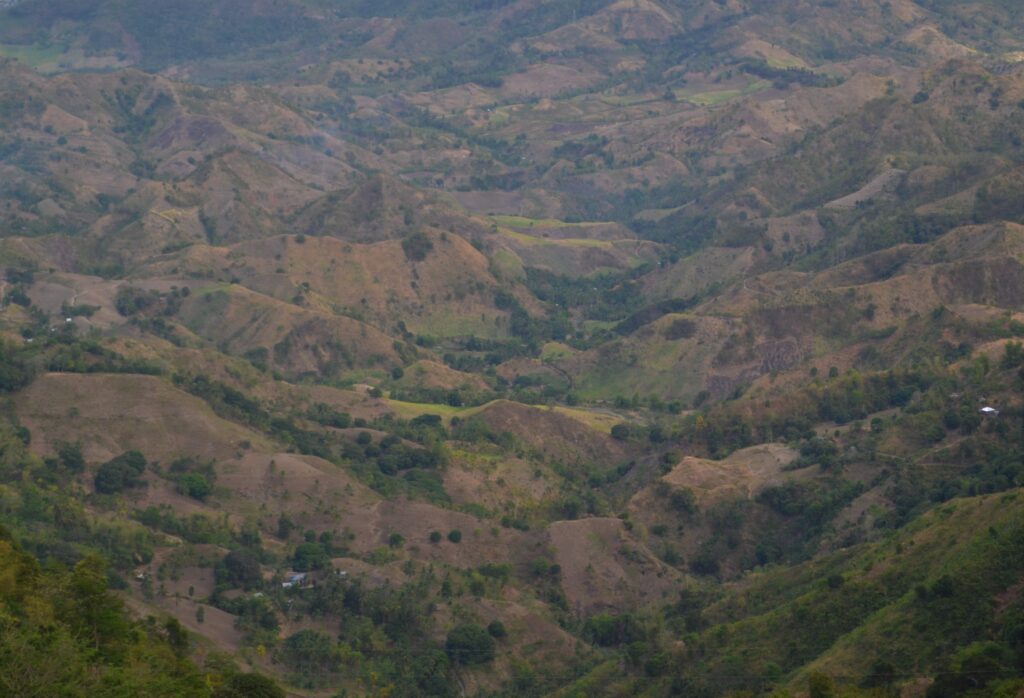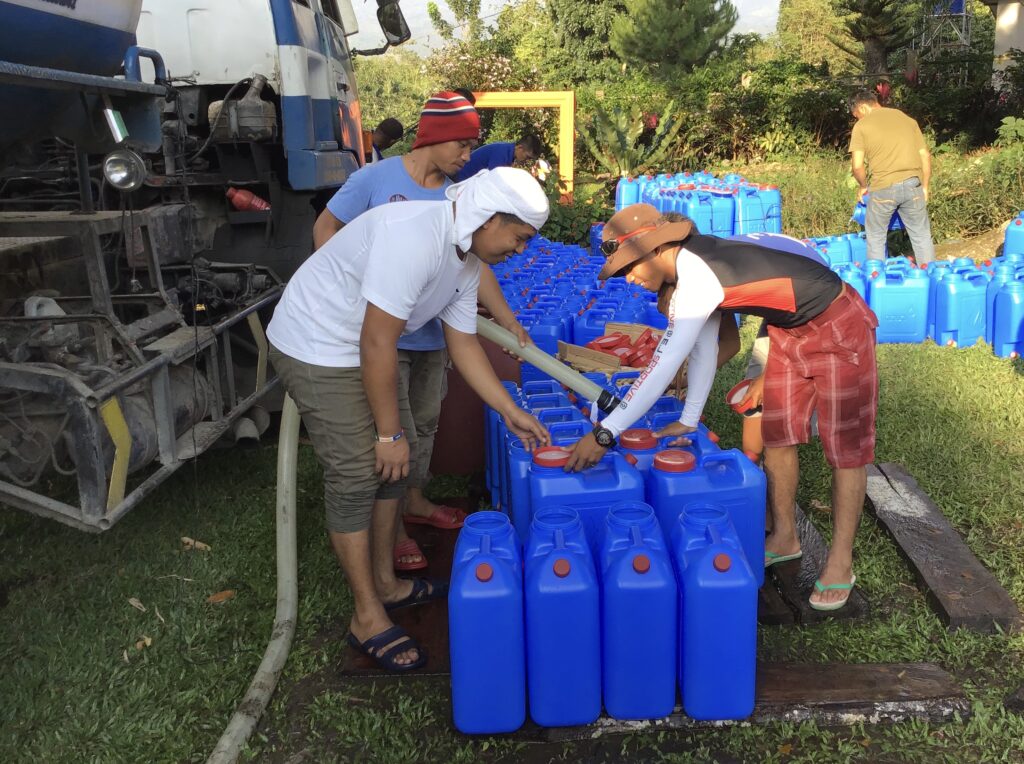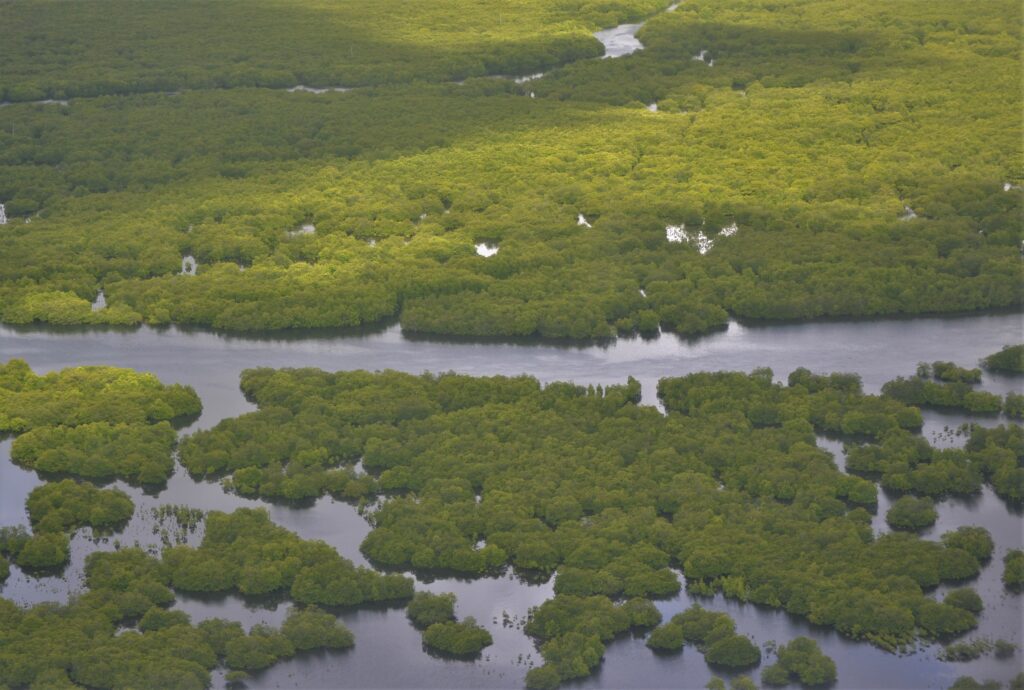Text and Photos by Henrylito D. Tacio
Imagine a country in the midst of the Pacific Ocean and the South China Sea having a water shortage. You may think it’s not possible, but that’s what the Philippines is already experiencing.
In a study done by the Japan International Cooperation Agency some years back, at least nine major cities were identified as “water-critical areas.” These were Metro Manila, Metro Cebu, Baguio, Angeles, Bacolod, Iloilo, Cagayan de Oro, Davao, and Zamboanga.
The Washington, D.C.-based World Resources Institute (WRI) agrees with the findings. It said, “the Philippines will likely experience severe water shortage by 2040 due to the combined impact of rapid population growth and climate change.”
Of the 167 surveyed countries which were highly vulnerable to severe water shortage, the Philippines ranked 57th. Among the Southeast Asian countries, the Philippines ranks second the lowest in terms of per capita water availability per year with only 1,907 cubic meters.
Now, if the country wants its water sources to be assured in the coming years, it has to protect its watersheds and wetlands.
Many of the country’s major cities are located in watersheds, also called catchment areas or drainage basins. “Land use and vegetative cover in the watersheds are very important because they affect water flow and water quality,” explained Patrick Durst, then a senior forestry officer of the regional office of the UN Food and Agriculture Organization (FAO) in Bangkok, Thailand.

One indicator of a good watershed is a healthy forest. “This is because forests can help to relegate the flow of water,” Durst said. “A watershed is a watershed is a watershed,” declared the late Regina Lopez when she was the head of the Department of Environment and Natural Resources (DENR).
In a Rappler feature, Pia Ranada explained the importance of trees growing in watersheds. “A typical tree breathes out 250 to 400 gallons of water per day through its leaves, humidifying the air,” she wrote. “This process, called evapotranspiration, is responsible for most of the rain that falls inland, far from oceans. Thus, without trees, there is no rain and it is rain that supplies much of the freshwater humans need to live.”
Durst said the main benefit trees provide helping to intercept precipitation and facilitate its infiltration into the soil and groundwater storage areas. He added that the trees also help reduce soil erosion by “breaking the fall” (that is, the impact) of rainfall that might otherwise dislodge soil particles upon harsh impact.
“Trees, through its leaves and branches, intercept rainfall,” the retired FAO official pointed out. “But more importantly, healthy forests’ ground cover – organic litter, twigs, small plants and fallen leaves, among others – help trap water and hold it until it has an opportunity to soak into the ground soil.”
In addition, roots – whether alive or decaying – provide additional pore space above that of normal soil texture for water to infiltrate into the ground. “This is the reason why local springs and streams maintain a healthy flow when surrounded by protected micro-watersheds,” Durst pointed out.
Unfortunately, 90% of the 99 identified watershed areas in the country, according to a report from the DENR, are “hydrologically critical” due to their degraded physical condition as a result of the loss of forest cover.

“One of the most formidable environmental challenges the Philippines faces today is its diminishing forest cover,” a World Bank report highlights. “Of the country’s total forestland area of 15.88 million hectares, only 5.4 million hectares are covered with forests and fewer than a million hectares of these are left with old growth forests.”
If you think deforestation only happens in the uplands, where most of the country’s forests are located, you’re wrong. Mangroves, those trees growing in the coastlines, are also wantonly denuded.
In 1918, the country’s mangroves were estimated to cover 5,000 square kilometers. By 1970, they had dwindled to 2,800 square kilometers and 2,420 square kilometers a decade later.
“Mangroves in the Philippines have long been ‘ecologically disturbed’ by rampant cutting for timber products and massive conversion of forests into aquaculture ponds,” read the introduction and overview of the State of the Mangrove Summit.
Mangroves are part of wetlands, areas where water meets land. In addition, wetlands also include peatlands and marshes, rivers and lakes, deltas, floodplains, flooded forests, rice-fields, and even coral reefs.
The Philippines has now eight wetlands of international importance; these are Agusan Marsh Wildlife Sanctuary in Mindanao, Naujan Lake National Park in Oriental Mindoro, Olango Island Wildlife Sanctuary in Cebu, Puerto Princesa Subterranean River National Park in Palawan, the Tubbataha Reefs Natural Park in the Sulu Sea, the Las Piñas-Parañaque Critical Habitat and Ecotourism Area, the Negros Occidental Coastal Wetlands Conservations Area, and the Sasmuan Pampanga Coastal Wetlands.

“If managed property, inland wetlands can serve as natural water reservoirs,” said Dr. Theresa Mundita S. Lim, executive director of the Laguna-based ASEAN Centre for Biodiversity (ACD). “Most especially during rainy seasons, these ecosystems recharge groundwater and provide sustainable surface water supply. The water coming from these natural reservoirs serve various purposes at individual and societal levels.”
Lim urged that the role of wetland ecosystems as natural solutions to the crisis “to be widely recognized.” She said, “Now more than ever, we need a whole-of-community and integrated approach in sustainably managing and conserving our remaining wetlands, with recognition of the relationship between water security, public health, and well-being.”
Now is the time to listen to her call. In this time of coronavirus disease 2019 (COVID-19) pandemic, “this issue is even more timely as clean water is necessary for ensuring proper hygiene, public health, and safety,” Lim pointed out.
Water shortage is happening not only in the cities but even in rural areas as well. When Clarabelle Cornelio, who works in Davao City, goes home to her native town in Bansalan, Davao del Sur, she often complains of not having water. “Permi lang walay agas ug tubig sa among lugar,” she wrote in her Facebook account. (Oftentimes, water is not gushing from our faucet.)
She’s not alone. “So many people have been complaining about it; there are others who already use profane words to raise the problem,” commented Meryl Louise Lapinig. “So many consumers have gone to the water district office but nothing happened. They’re too haste in getting the payment but not when it comes to service.”
Water is one of the most abundant resources the country has. Perhaps no other resource plays a more important part in people’s daily lives than water. When you wake up in the morning, you drink a cup of coffee. Then, you take a bath, cook your food and even wash your car.
The rice and meat you eat, the vegetables you turn into a salad, and the soft drink that quench your thirst, the liquid you use to wash your hands, and the air-conditioner you use at your office – all these need water.
“Water is the driving force in nature,” the famed Leonardo da Vince stated. “It is the basis of life,” pointed out Sandra Postel, director of the Massachusetts-based Global Water Policy Project.
“A person can survive only three to five days without water, in some cases people have survived for an average of one week,” says thewaterpage.com. “Once the body is deprived of fluids the cells and organs in the body begin to deteriorate. The presence of water in the body could mean the difference between life and death.”
Water – not oil! – is the precursor of war in the coming years. “Wars of the next century will be over water,” warned World Bank’s Ismail Serageldin in 1995. Crown Prince Hassan of Jordan said the 1967 Six-Day War was caused by tensions over the Jordan River and its tributaries. “It’s simply a question of survival,” said the Israeli Water Commissioner Meir Ben Meir. “Thirst for water is an ignition to violence.”
Water is a limited non-renewable resource, of which a fixed amount exists on the planet: some 1,400 million cubic kilometers, which can be neither increased nor decreased. Most of this, 97.4%, is saltwater; another 2% is locked away in ice caps and glaciers. This leaves only 0.6%, or 8.4 cubic kilometers, of which some 8 million cubic kilometers are stored underground.
According to the United Nations food agency, if all the earth’s water were to fit in a gallon jug (4 liters), the available freshwater would be just over one tablespoon.
Back in 1746, American statesman Benjamin Franklin said: “When the well’s dry, we know the worth of water.” He may be gone already, but his statement is still prevalent as ever. In fact, it is now one of the most-often quoted words as water is becoming scarcer.
“Unlike energy crisis,” commented Klaus Toepfer, former executive director of the United Nations Environment Program, “the water crisis is life threatening.”
As such, the problem of water shortage must be solved now. “The world has got a very big water problem,” says Sir Crispin Tickell, one of the 1992 Earth Summit organizers in Rio de Janeiro. “It will be the progenitor of more wars than oil.”

